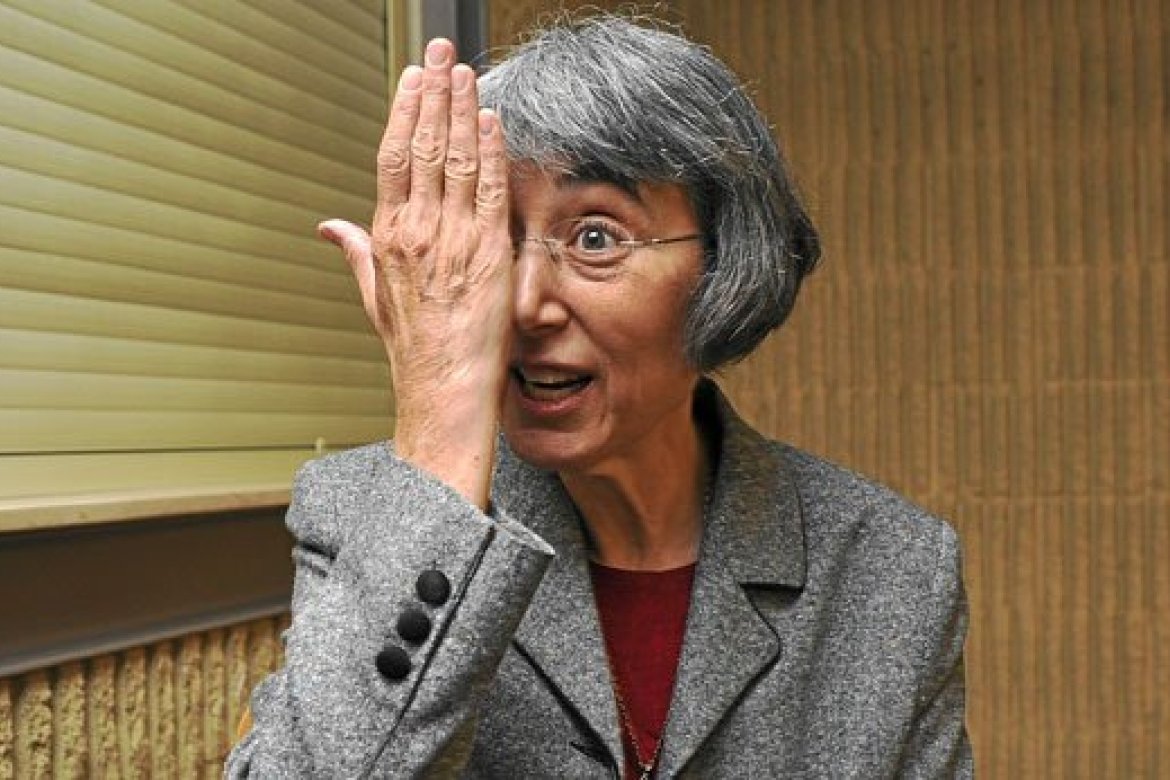Retraining the Brain

Therapy as an adult helps her see in 3-D
For 17 years, Mount Holyoke College professor of neurobiology Susan R. Barry had lectured that there are critical periods for what the brain can learn. For her, that meant that because she had been cross-eyed since infancy, she would always see the world as flat, or in just two dimensions, because she had not had her eyes straightened early enough for her brain to learn how to do that. She had three eye muscle operations to correct the appearance of her eyes starting at age 2, too late to learn to see the world in three dimensions, according to common academic wisdom. However, after doing visual exercises for about a year, she learned in 2002 that that common belief is not true, that the brain is more “plastic” than traditionally thought.
By doing simple routines for about 20 minutes a day with items like a bead and a string or staring at cartoon faces, she was able to teach her brain to see in three dimensions. “I developed stereovision when I was 48,” she said during a recent interview at her home here. Barry describes her journey from seeing the world as flat to seeing it as a place where things pop out at her in her recently published book, “Fixing My Gaze.” People who are cross-eyed have problems perceiving depth because each eye focuses on a different area and the brain has to suppress one of those images to allow for normal functioning.
By betting both eyes to focus on the same point in space, the therapy gives people like her normal vision. Prior to the exercises, Barry could do things like drive, but not very well. “I was a pretty poor driver and I did not like to drive,” she said. “ I did not drive at night and I did not drive on the highway.” The professor also said she had a hard time driving and reading road signs at the same time. “It is a very confused view of the world, which is why my parents probably told me I was a very difficult child,” Barry said.
It wasn’t until she started having trouble seeing students in the back of the auditorium that Barry visited an area ophthalmologist. He told her if she thought she had a visual problem, she should see a psychiatrist. Instead, she went to see local optometrist Steven A. Markow. He told her she would be a good candidate for optometric vision therapy and referred her to Theresa J. Ruggiero, and optometrist in Northampton. Ruggiero said the therapy is based on the idea that vision is a learned brain process and works with the visual neuromuscular path-ways in the brain. The therapy works for people of all ages and can be used to treat other visual disorders in which the two eyes do not work well together. Barry said it came as “a big surprise” to learn that there was therapy that could teach her to see in three dimensions.
The problem, as she sees it, is that ophthalmologists, that is medical doctors specializing in the eye, especially surgery of the eye, often do not work in tandem with optometrists. Optometrists, who are not medical doctors but are schooled and must pass written and clinical state board examinations, specialize in correcting vision, mostly through glasses. Dr. William C.R. Seefield, a Springfield ophthalmologist who is also an optometrist, said in an ideal world the two professionals would work together more, but do not always do that, probably because of issues like economics and pride.
Barry said that of the approximately 38,000 optometrists in the country only 400 to 500 are certified to do the type of therapy she received. In addition, she said insurance companies do not cover the expense, giving the impression the therapy does not work. Barry said 4 percent of the population is afflicted with crossed eyes. Her book includes 57 pages of notes with references to various studies and journals, so it will be useful for scientists as well as the general reader. So far, Barry’s experience has been the subject of feature stories in The New Yorker and over National Public Radio.
Reference:
Constantine, Sandra E. "Retraining The Brain - Therapy as an adult helps her see in 3-D." Republican. December 30, 2009, Print.